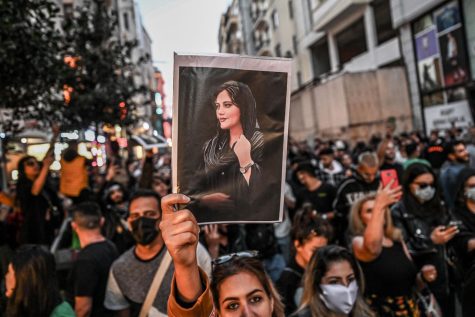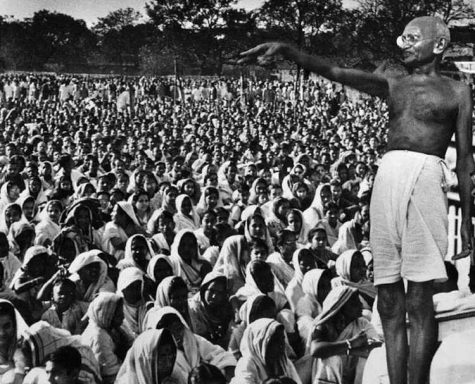Changelings, or the Autstic Experience Condensed in the Suspicion of Imposters
June 28, 2022
Machiavelli Merkle-Ward
Alienation is nothing unknown to those marginalized. In fact, marginalization, in and of itself, is often an experience of forced separation from a privileged world, where one distinctly feels the espoused detriment of their difference, becoming a stranger to a world that feels less and less fundamentally your own. This is true of the autistic experience in a way that is incalculable, to the extent that a common phrase surrounding autism is that of being an alien, whether this term is embraced by autistic individuals like myself or wielded against us in mockery of perceived inhumanity (Hacking 44). Thus, despite my love of clinical, cold academic articles, I realize that I cannot create such without removing the tonal humanity that is so intrinsic both to the issue at hand and my case. I aim to address this topic with both a historical and personal perspective, relating perceptions of autism to lived experience.
This concept of ‘unnatural’ autistic difference has existed for centuries, with the myth of changelings–‘normal’ children being replaced by cursed fey offspring–being used since medieval times to both explain the existence of autism and other disabilities and subsequently condone maltreatment. The myth stated that the parents had indeed created a non-disabled child, but the fey, a race of ethereal, powerful tricksters, has replaced the child with a disabled child as a joke, stealing the original baby away for their own amusement; the creature in the ‘real’ baby’s place was in fact another fey, an abnormal and unnatural mythic creature posing as a human child to cause distress (Albury). This was the changeling. While there were different variations of the myth, a widely circulated version stated that the child was born normal, but then stolen from its crib and replaced. This, along with its discussed symptoms of fey-hood, directly linked this myth to autism. Autism does not have distinguishing visual characteristics, and symptoms of autism, often related to social interaction, are only present in infancy after an asymptomatic duration; it is often diagnosed from 4 months to 4 years old, which exactly fits the timeline of professed ‘normal to not normal’. Furthermore, the symptoms that the myth describes are those common in autistic children–absence of smiling or interaction, abnormally proficient and sophisticated vocabulary, tendency to laugh at nothing, lack of speech, specifically exceptional proficiency, anger, and unnecessary intense emotions. In fact, this match is very precise, as some of these behaviors are used currently for a diagnoses, with the CDC citing a “…not show[ing] facial expressions like happy, sad, angry, and surprised by 9 months of age” as a characteristic of autism spectrum disorder, incredibly similar to the medieval diagnosing standards for changelings; with this, the connection to autism is clear (Centers for Disease Control and Prevention). But the importance of this myth comes not just from its establishment of an autistic history beyond the 1900s, but its insight into persistent views on autism– specifically, the idea of abnormal inhumanity.
According to this myth, changelings, or realistically, autistic people, were literally not human. They were a distinct other, a creature separate from normal existence whose literal mythic purpose was to disrupt and harm the genuine, real humans around them. This narrative of inhumanity served a dual purpose–it both explained the existence of neurodivergent people and their behaviors and served as a justification for abuse. In this lens, autistic people were not normal, being furthermore considered something maleficent, and were thus easier to harm as they had been dehumanized. Infanticide was common in cases with supposed changelings, with a plethora of different regional means of ritually killing those born with a disability, ranging from exposure to an extremely poisonous “…potentially lethal solution of steeped foxglove leaves” or the reveal of the child’s “fairy nature… [by throwing it] into a bed of glowing coals” (Eberly 61). Continually, autistic people’s humanity was denied, with their difference feared and hated to the extent where they were not seen as fit to exist. Their classification as changelings, something that was no longer human, allowed for the denial of their rights and personhood.
By categorically declaring those who are different to be something other than human, it automatically strips their dignity by denying their fundamental humanity. While information about autism in America has certainly come far since normalized infanticide, there is still the persistent depiction and classification of autistic individuals as something inhuman. Still perpetuated is the myth of the changeling, only in new forms, with anti-autistic charity organizations such as Cure Autism Now claiming “…aliens [are] stealing one in every two hundred children… This is what is happening in America today. It is called autism” (Hacking 44). Autistic people are seen as this definable other, something distinctly different from ‘normal’, neurotypical individuals, and the claim of inhumanity is continued, now evoked with the classification of alien. Even outside of hate-mongering, general perceptions reflect that we are considered to be “weird”, “awkward”, abnormal, either “geniuses” or “idiots”, something untouchable. The feeling of otherness still exists, perpetuated by the misconception that the differences of autism are something innately different than a normal experience, instead of being simply a different type of normal experience.
A common autistic experience is the feeling that “this world was not built for me,” the feeling of being an alien in your own world due to a lack of understanding of your difference. As there is no monolithic autistic experience, I offer examples from my personal experience that connect with the alienation-inhuman trend previously depicted, to offer not just factual evidence, but the lens of human experience. For instance, people often react to my autistic qualities with surprise and disdain, often unconsciously, noticing that I am an unquantifiable ‘different’ and not knowing how to react. Often, instead of interacting with me as an entire person, people reject the aspects of me that are the most visibly autistic, leading to personal internalized suppression and the emotionally detrimental phenomena known as masking. These negative reactions to my disability then make me feel that I am not normal, or that I am something fundamentally wrong; my natural deviation from the norm results in alienation, stemming from the preconceptions that our society holds on difference and its correlation with an inhuman other.
To conclude, the autistic experience is often condensed into the suspicion of imposters–the fear and subsequent rejection of that which is considered abnormal. Connecting from medevial European myths to modern-American society, autistic individuals and behaviors are consistently met with judgements of inhumanity in place of recognition of difference, creating a cognitive divide between autistic individuals and a neurotypical world that often does not know how to recognize our humanity.
sources:
Albury, William R. “From Changelings to Extraterrestrials: Depictions of Autism in Popular Culture.” Hektoen International, Hektoen Institute of Medicine, 30 Jan. 2017, https://hekint.org/2017/01/30/from-changelings-to-extraterrestrials-depictions-of-autism-in-popular-culture/.
Centers for Disease Control and Prevention, National Center on Birth Defects and Developmental Disabilities. “Signs and Symptoms of Autism Spectrum Disorders.” Centers for Disease Control and Prevention, U.S. Department of Health & Human Services, 28 Mar. 2022, https://www.cdc.gov/ncbddd/autism/signs.html.
Eberly, Susan Schoon. “Fairies and the Folklore of Disability: Changelings, Hybrids and the Solitary Fairy.” Folklore, vol. 99, no. 1, 1988, pp. 58–77. JSTOR, http://www.jstor.org/stable/1259568. Accessed 18 Jun. 2022.
Hacking, Ian. “Humans, Aliens & Autism.” Daedalus, vol. 138, no. 3, 2009, pp. 44–59. JSTOR, http://www.jstor.org/stable/40543987. Accessed 17 Jun. 2022.





